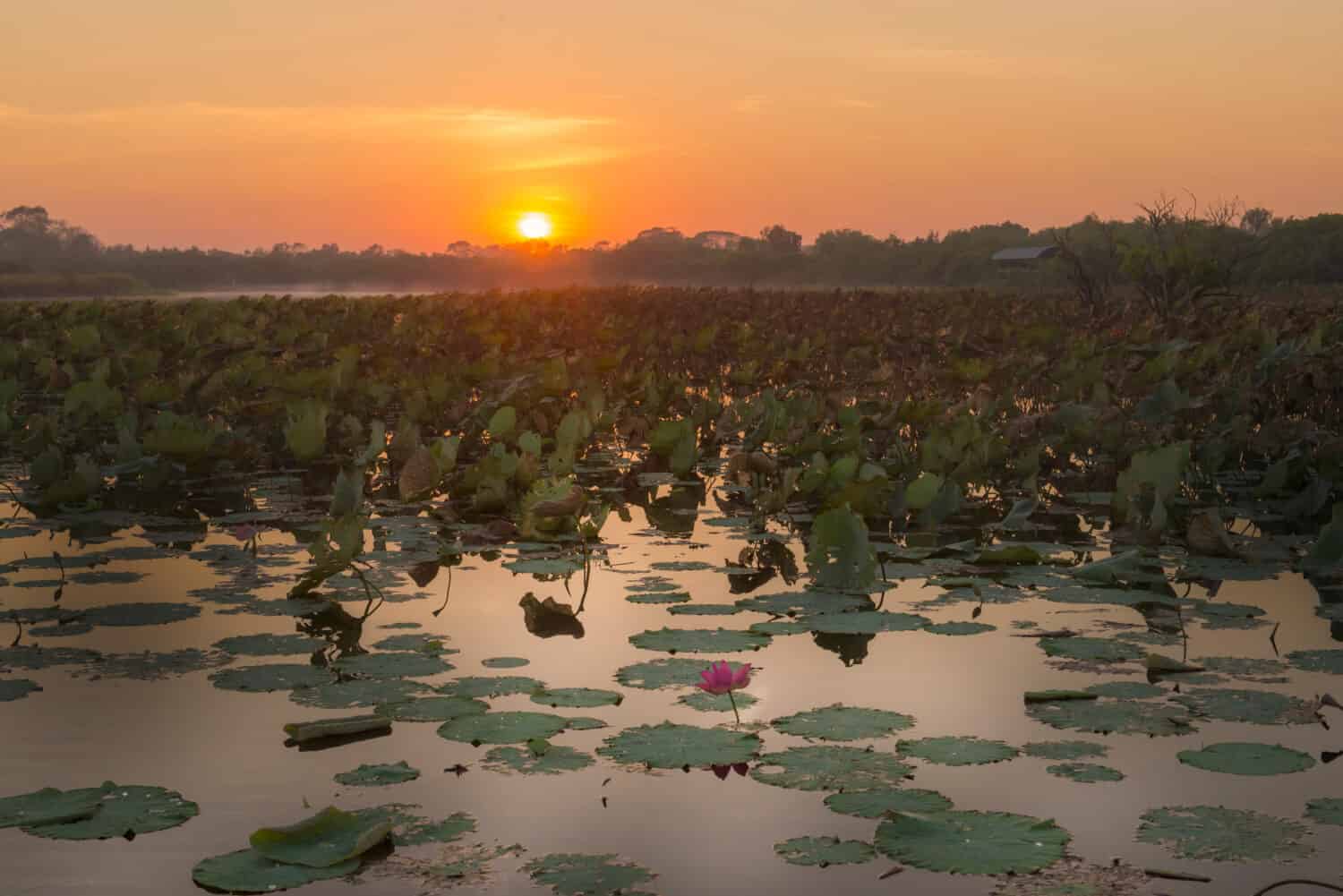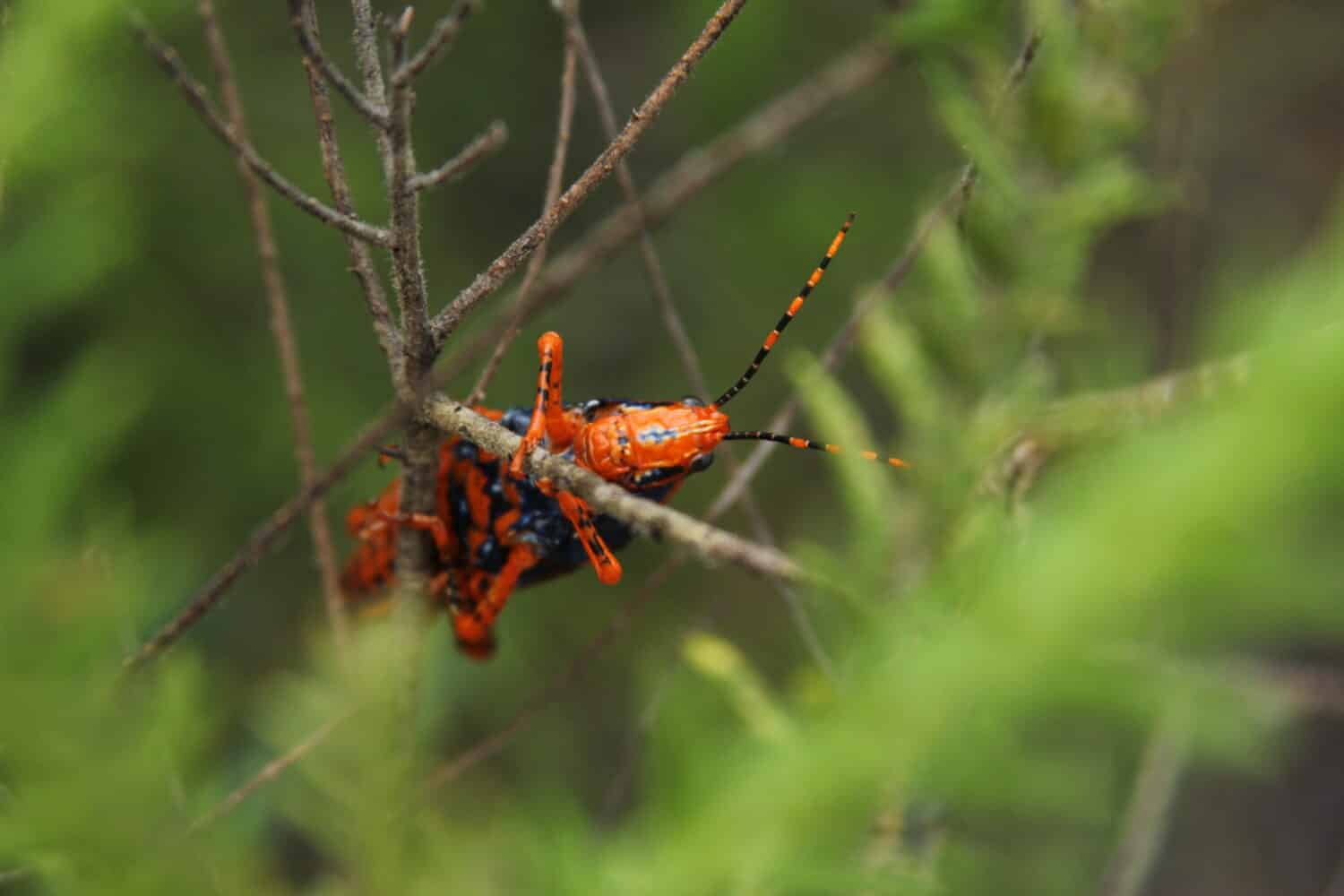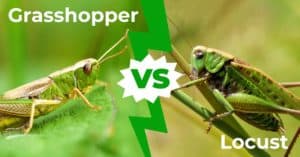Australia is home to many different kinds of creatures: kangaroos, koalas, and platypuses, to name a few. The island continent is also home to the rare Petasida ephippigera, better known as Leichhardt’s grasshopper. It is one of the most vivid insects in the wild today. With a mysterious disappearance adding to the legend of this beautiful grasshopper, it is discoverable today in its native Northern Territory of Australia. Meet the world’s most beautiful grasshopper, the Petasida ephiphhigera!
Who Is Ludwig Leichhardt?
Leichhardt’s grasshopper was named after Ludwig Leichhardt. Leichhardt was a German explorer who traveled the tropical wilderness of Australia’s Northern Territory in the 19th century. He was on an exploration of the uninvestigated parts of Australia. These were places where other explorers had not dared go until Leichhardt took a chance. While on an expedition from Moreton Bay to Port Essington, Leichhardt reported finding many new kinds of insects. He reported a new insect: grasshoppers with black spots and striped antennae, and covered in vivid, orange scales.
In his report, titled ‘Journal of an overland expedition in Australia, from Moreton Bay to Port Essington…during the years 1844-45’, Leichhardt wrote that they were native to Australia, as they hadn’t been found anywhere else previously. They were coined Leichhardt’s grasshopper – a beautiful, spotted insect that disappeared as mysteriously as its namesake.

Leichhardt’s grasshopper was discovered in what is now known as Australia’s Northern Territory.
©Shane Bartie/Shutterstock.com
Leichhardt’s Grasshopper Disappearance
The world’s most beautiful grasshopper went unseen for a long time after its discovery. After Leichhardt himself went missing while beginning an exploration into inland Australia, the grasshopper was lost for a long time. There were only two sightings of the grasshopper between Leichhardt’s disappearance in 1848 and the early 1900s. Then, it disappeared for a long time. After nearly 70 years without being seen by anyone, it was ‘rediscovered’ by J.H. Calaby, an Australian naturalist and ornithologist, while he was on an expedition to spot a single male nymph. Now, the grasshopper is discoverable in small clusters in the grasslands, the woodlands, and the tropical parts of northern Australia. One can find Leichhardt’s grasshopper in places like West Arnhem Land, Kakadu National Park, Nitmiluk National Park, and Keep River National Park. Keep an eye out for this evasive insect on your next Australian adventure!

Kakadu National Park is a preferred habitat for Leichhardt’s grasshopper.
©EcoPrint/Shutterstock.com
What Does Leichhardt’s Grasshopper Look Like?
It is an easy insect to identify. Leichhardt’s grasshoppers are a blazing orange, easy to spot in the tropical green of its environment. It is identifiable by the deep blue patches that are on its head and on its thorax. In addition, it is recognizable by the black patches on its body and its striped antennae. Despite its coloring, Leichhardt’s grasshopper is not a venomous insect. Typically, bright, vivid colors like red and orange mean poisonous in nature. Instead of emitting toxins when agitated, it spews a repulsive brown liquid to repel predators. Scientists and researchers suspect that the reason this spew is repulsive is a result of their very simplistic diet. They only eat Pityrodia, a plant that is also native to the northern and western parts of Australia. Scientists think that the bitter-tasting sugars in this plant create the repugnant liquid.
The male Petasida ephiphhigera is a bit smaller than its female counterpart. The grasshopper averages about one to one-and-a-half inches in length. Another defense mechanism that they possess is their exoskeleton. It’s made of a material called chitin, and it is good for retaining moisture. This is incredibly beneficial to the grasshopper, as they enjoy warm, hot, tropical summers. This exoskeleton protects them even on the hottest days of the summer.
Leichhardt’s grasshopper also has the ability to fly; however, they don’t employ this ability often. They hardly leave their chosen Pityrodia plant during their lifetime, which, on average, is about a year. Despite having wings and the ability to fly, they are content in their known habitat in Australia’s Northern Territory.

Leichhardt’s grasshopper is identifiable by its bright, orange body and striped antennae.
©Daniel Di Marco/Shutterstock.com
Where Is the Habitat of Leichhardt’s Grasshopper?
Leichhardt’s grasshopper is native to Australia, and they presently live in groups in the Northern Territory. They enjoy the wet-dry tropical summers, and they are findable in forests, woodlands, and grasslands. While they’re more difficult to find during the non-summer months, Leichhardt’s grasshopper can be found year-round. With a little bit of patience, you can find them on Pityrodia plants, their preferred food source.
They currently reside in a couple of different national parks: Kakadu National Park, Keep River National Park, and Nitmiluk National Park. They have smaller numbers now due to predators. However, at these national parks, they congregate in small groups, if you look closely enough.

Nitmiluk National Park is the perfect habitat for Leichhardt’s grasshopper: warm and tropical.
©Daniela Constantinescu/Shutterstock.com
What Does Leichhardt’s Grasshopper Eat?
Leichhardt’s grasshopper is a simple insect. It’s an herbivore, meaning that they only consume plants. However, Leichhardt’s grasshopper focuses on one plant: the pityrodia bush. The grasshopper has a total fixation on this plant, typically for its entire lifespan. It has such an affinity for the plant that sometimes, some of the grasshoppers often don’t even leave the plant for its entire lifespan. It stays at the same one for its entire life and doesn’t move on to another one.
Scientists theorize that the grasshopper loves this plant because of the sugars in the plant. It’s common for the grasshopper to stay on a singular Pityrodia plant for its entire lifespan, as it is used to it and grows with it. After it hatches at the base of the plant, the grasshopper will move up the plant gradually as it matures through adulthood. This occurs because the lower parts of the plant (where the hatching takes place) contain a smaller concentration of chemical compounds. The upper parts of the plant contain a higher concentration of chemical compounds, which is what attracts the grasshopper to the plant in the first place.
What Predators Do Leichhardt’s Grasshopper Face?
Leichhardt’s grasshopper faces a couple of predators. Birds, lizards, spiders, and other insects target the grasshopper as prey. The pityrodia plant that this grasshopper connects to when it hatches is also home to its prey during the dry season. Other insects congregate on the Pityrodia plant and prey upon Leichhardt’s grasshopper, despite its vibrant, off-putting coloring, which is usually a deterrent.
So, how does the Leichhardt’s grasshopper protect itself from its predators? When it begins to feel threatened or agitated, it emits a revolting, brown liquid. It tastes and smells terrible, in an attempt to prevent predators from attacking it. The pungent sugars in its main food source, the Pityrodia plant, are theorized to be the reason behind the brown spew smelling and tasting terrible. Don’t get too close to Leichhardt’s grasshopper and accidentally find out for yourself!
In addition to other animals and insects preying upon them, Leichhardt’s grasshopper also has to worry about fire. Controlled burns are when humans purposefully administer fire to an area in an attempt to help the ecosystem of that environment. It gets rid of invasive species and creates new life where old life was. However, in the case of this particular grasshopper, it might be doing more harm than good. Controlled burns in the Northern Territory occur between May and June. This timing affects Leichhardt’s grasshopper, as the newly hatched grasshoppers haven’t reached adulthood and can’t sustain themselves through a fire. There’s also the loss of the Pityrodia plant for a few weeks during a controlled burn. This particular plant will grow back and be healthy after a fire; however, it will take a few weeks for it to fully recover, depleting the grasshopper’s food source quickly.

Leichhardt’s grasshopper is prey to bigger creatures, like lizards.
©Repli-Kate/Shutterstock.com
Summary
In summary, Leichhardt’s grasshopper is a very special insect. It is a beautiful, vivid creature that knows what it likes and sticks to it. They have a mysterious lore about them as well, having disappeared shortly after their discovery, only to be ‘rediscovered’ decades later. Now, they are identifiable in the Northern Territory of Australia by their bright orange scales and striped antennae. Just don’t get too close and find out how awful their spew smells!
Thank you for reading! Have some feedback for us? Contact the AZ Animals editorial team.







